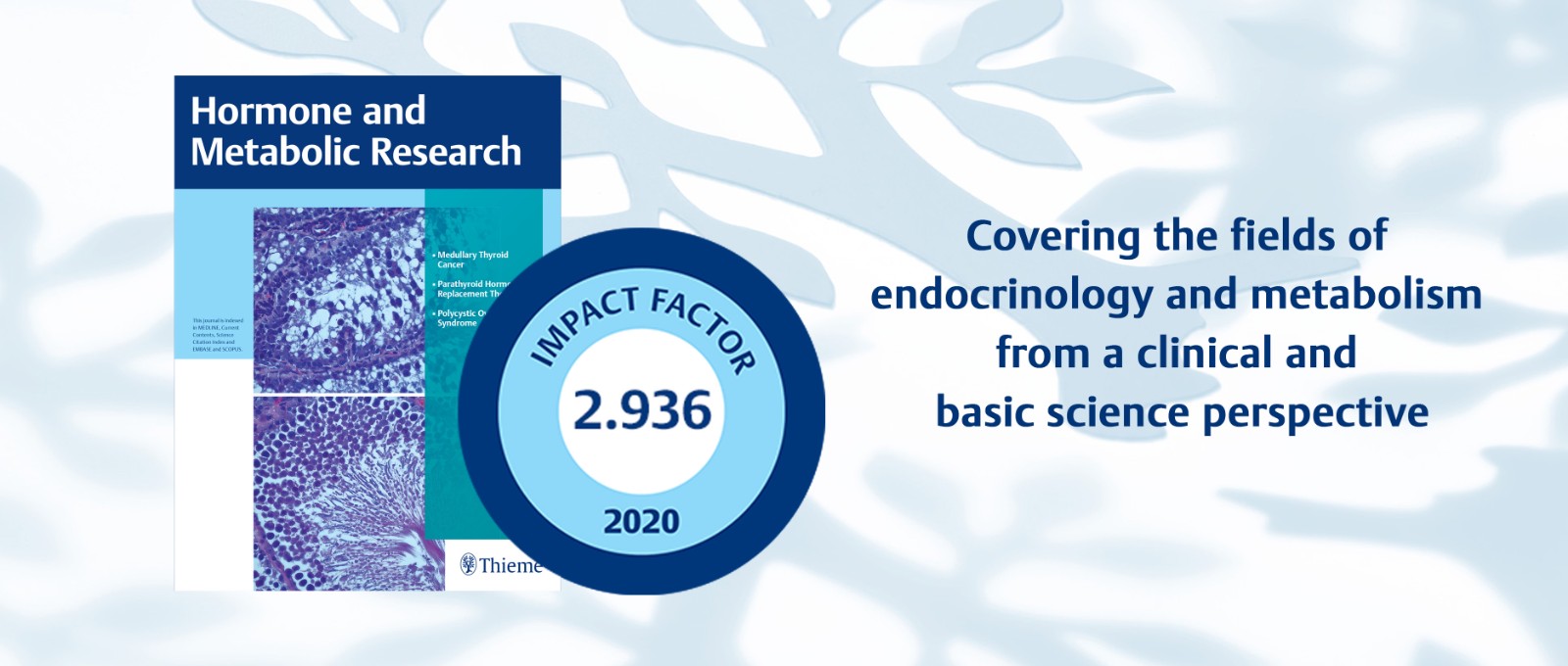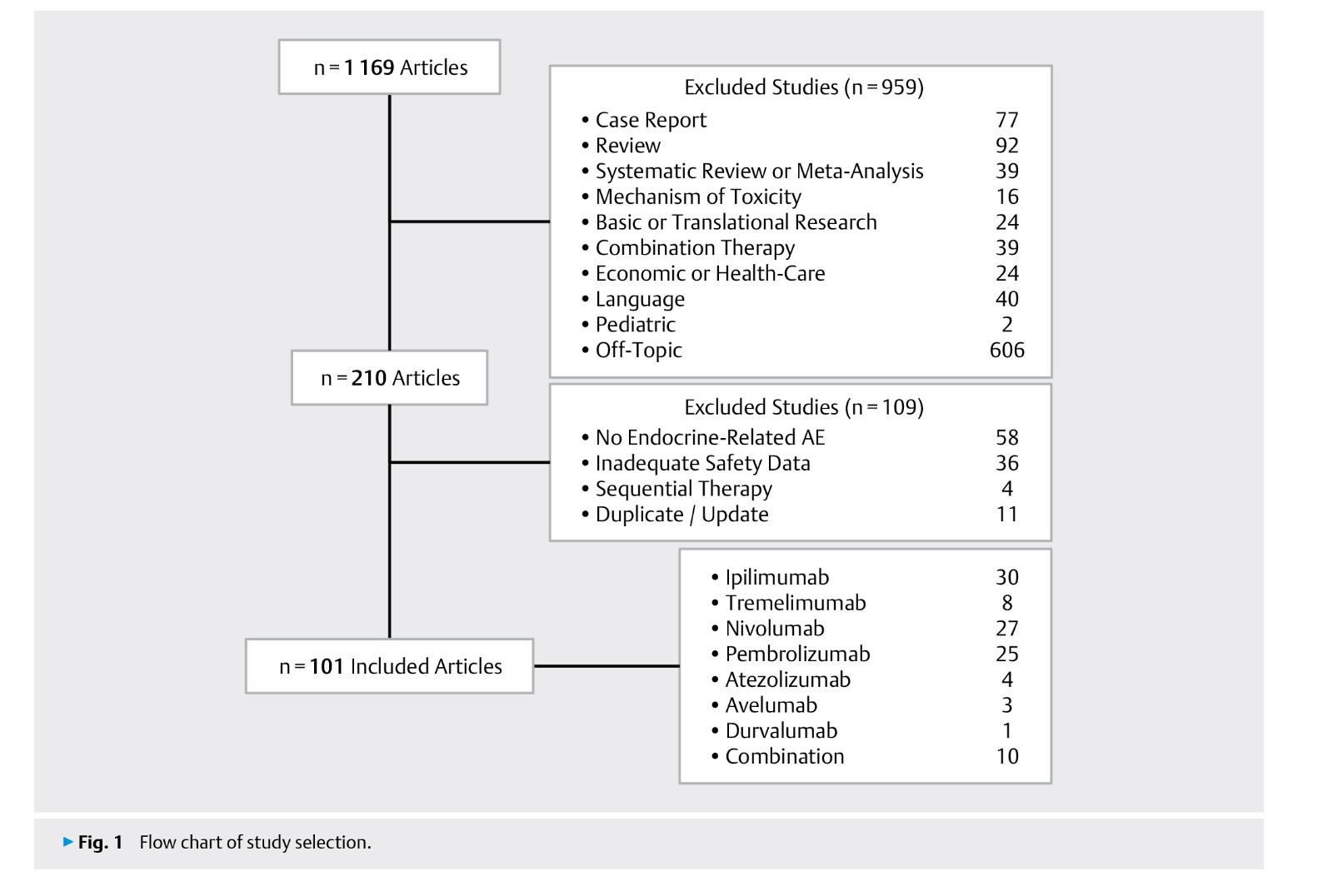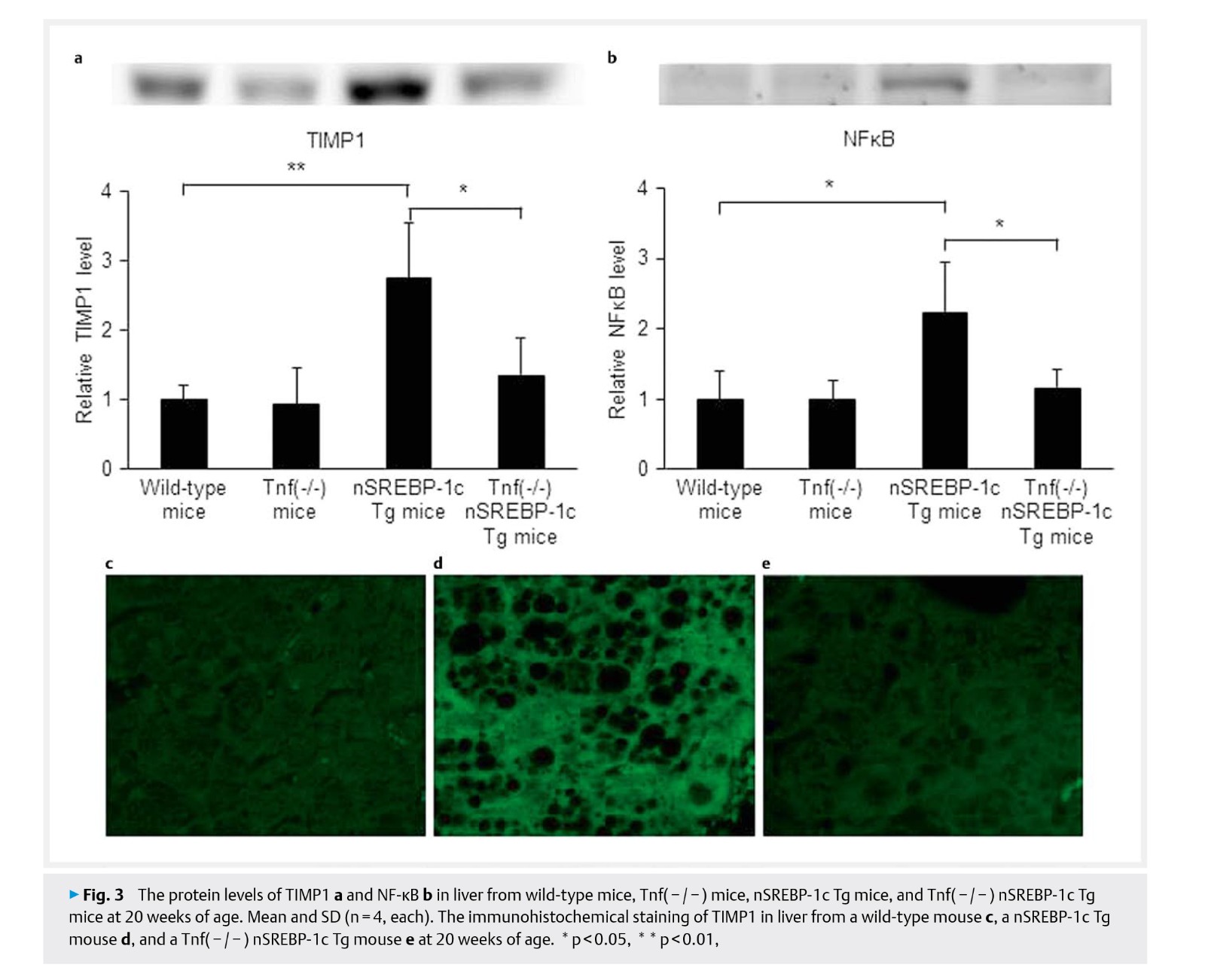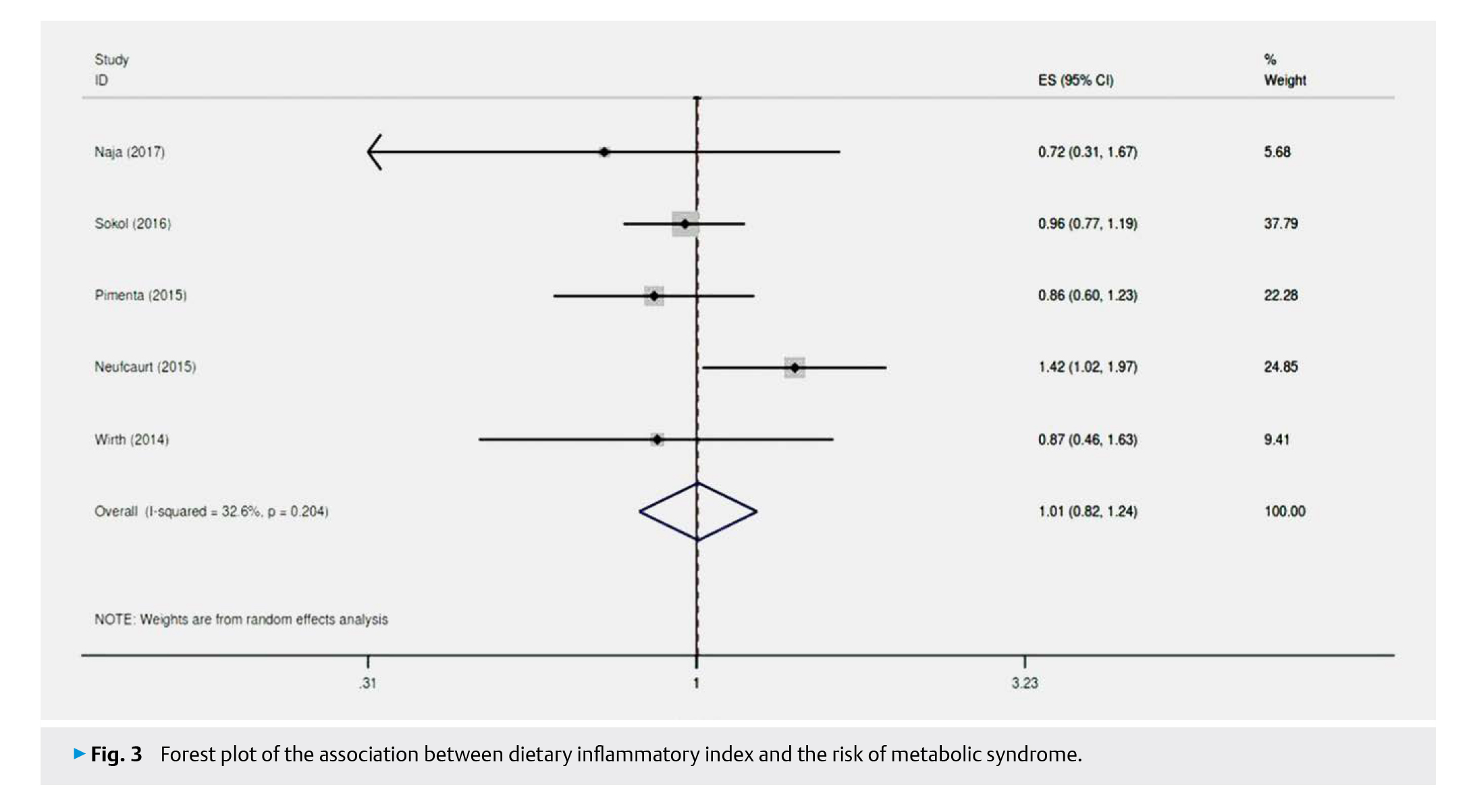

影响因子2020
2.936
备受期待的2020年期刊影响因子已经发布,我们很高兴地看到内分泌学期刊 Hormone and Metabolic Research 的影响因子提高到了2.936。非常感谢所有作者、审稿人和编辑的支持和最宝贵的贡献。
以下三篇是被引用次数最多的论文,它们对影响因子的提高有着重要贡献,欢迎免费阅读。
de Filette J et al.

Monoclonal antibodies targeting cytotoxic T-lymphocyte antigen-4 (CTLA-4), programed cell death 1 (PD-1), or its ligand (PD-L1) have become the mainstay for advanced malignancies. The incidence of endocrine adverse events provoked by these immune checkpoint inhibitors (ICI) is based on data from randomized controlled trials, which have their drawbacks. PubMed was searched through August 22nd, 2017, by 2 reviewers independently (J.d.F. and C.E.A.). Early phase I/II, phase III experimental trials, prospective and retrospective observational studies were included. The weighted incidence and risk ratio were estimated for hypophysitis, primary thyroid disease, primary adrenal insufficiency, and diabetes mellitus. Their management is discussed in a systematic review. A total of 101 studies involving 19 922 patients were included. Ipilimumab-treated patients experienced hypophysitis in 5.6% (95% CI, 3.9–8.1), which was higher than nivolumab (0.5%; 95% CI, 0.2–1.2) and pembrolizumab (1.1%; 95% CI, 0.5–2.6). PD-1/PD-L1 inhibitors had a higher incidence of thyroid dysfunction – particularly hypothyroidism (nivolumab, 8.0%; 95% CI, 6.4–9.8; pembrolizumab, 8.5%; 95% CI, 7.5–9.7; PD-L1, 5.5%; 95% CI, 4.4–6.8; ipilimumab, 3.8%; 95% CI, 2.6–5.5). Combination therapy was associated with a high incidence of hypothyroidism (10.2–16.4%), hyperthyroidism (9.4–10.4%), hypophysitis (8.8–10.5%), and primary adrenal insufficiency (5.2–7.6%). Diabetes mellitus and primary adrenal insufficiency were less frequent findings on monotherapy. Our meta-analysis shows a high incidence of endocrine adverse events provoked by single agent checkpoint blockade, further reinforced by combined treatment.
Kakino S et al.

Previously, we have shown that the adipocyte-specific nuclear form of sterol regulatory element-binding protein-1c (nSREBP-1c) transgenic mice spontaneously developed hepatic lesions that are similar to those of human nonalcoholic steatohepatitis (NASH) with a concomitant elevation of plasma TNF-α. In this study, we analyzed the role of TNF-α in the progression of nonalcoholic fatty liver disease (NAFLD). We established a Tnf knockout nSREBP-1c transgenic mouse line. Glucose tolerance and liver histology were examined at the age of 20 weeks. The gene expression and protein levels were assessed by quantitative RT-PCR and Western blot, respectively. The Tnf knockout improved glucose tolerance and significantly reduced the prevalence of hepatic steatosis (20% vs. 100%, p<0.0001) and fibrosis (15% vs. 65%, p=0.0057). The expressions of Acaca, Scd1, Mcp1, Tgfb1, Col1a1, and Timp1 were increased in the liver from the original nSREBP-1c transgenic mice. However, gene upregulation was reduced in the livers from the Tnf(−/−) nSREBP-1c transgenic mice. Furthermore, the hepatic levels of TIMP1 protein were increased in the original nSREBP-1c transgenic mice but not in Tnf(−/−) nSREBP-1c transgenic mice. To assess the direct effect of TNF-α on the expression of the genes, we cultured primary hepatocytes in the presence of TNF-α and found that TNF-α increased the expression of Mcp1, Tgfb1, and Timp1 in hepatocytes. These observations indicate that TNF-α plays a pivotal role in the development of NAFLD and progression to NASH through upregulating key molecules associated with lipid metabolism, inflammatory cytokines, and fibrosis in the liver.
Namazi N et al.

Findings from previous studies on the association between the Dietary Inflammatory Index (DII) and the risk of chronic diseases and mortality have been inconsistent. We aimed to summarize studies on the association of the DII and the risk for cardiovascular disease (CVD), metabolic syndrome (MetS), and mortality in a systematic review and meta-analysis. We performed a systematic search in PubMed/Medline, Web of Knowledge, and Scopus databases for relevant studies written in English and published until 31 December 2017. Studies that reported the relative risk (RR), odd ratio (OR) or hazard ratio (HR) for the most pro-inflammatory versus the most anti-inflammatory diets were included. Finally, 17 studies [CVD (n=6), MetS (n=5), mortality (n=6)] were included for systematic review and meta-analysis. Findings indicated a trend toward a positive relationship between the DII and the risk for CVD (pooled RR: 1.35; 95% CI: 1.13, 1.60; I2: 28.6%, p=0.21), all-cause mortality (pooled HR: 1.21; 95% CI: 1.09, 1.35; I2: 72.6%, p=0.003), CVD mortality (pooled HR: 1.30, 95% CI: 1.07, 1.57; I2: 74.0%, p=0.009) and cancer mortality (pooled HR: 1.28; 95% CI: 1.07, 1.53; I2: 62.5%, p=0.03). However, no significant association was found between the DII and the risk for MetS (pooled RR: 1.01; 95% CI: 0.82, 1.24; I2: 32.6%, p=0.20). Although in the current meta-analysis the most pro-inflammatory diet versus the most anti-inflammatory diet was not associated with the risk of MetS, we observed a substantial association between the DII and the risk for CVD and all types of mortality. However, further cohort studies in different populations are needed to clarify this association.
阅读本刊更多论文,请点击这里。
